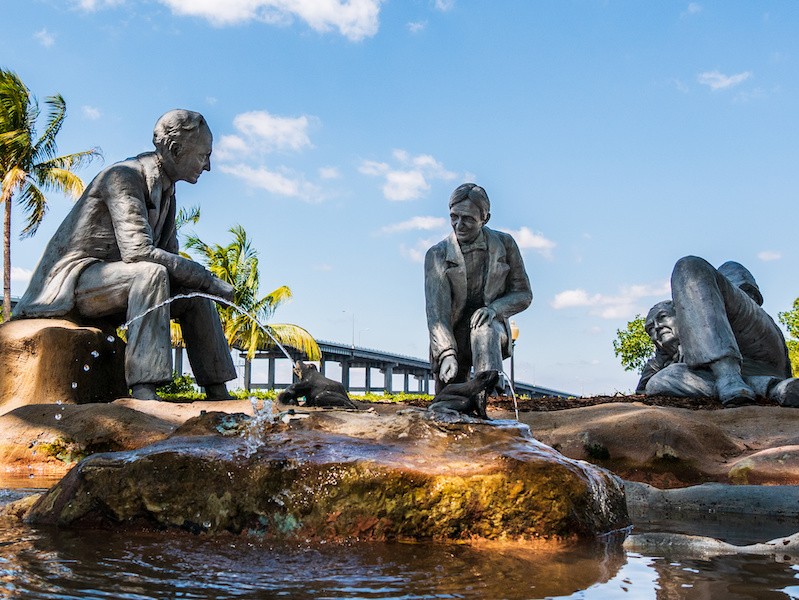American Journey
“I am sure we shall all go back to our serious tasks with a clearer brain and more deeply grateful for life and this beautiful world in which we live.” John Burroughs, American Journey (p. 71)
Sometimes a book is memorable because of the experience of reading it, sometimes because of when you read it, and other times it is because of the characters – whether real or fictional. American Journey, On the Road with Henry Ford, Thomas Edison, and John Burroughs by Wes Davis, is memorable because of all three.
Business history is my absolute favorite subject, and I feel like I owe Henry Ford one for preserving my beloved Wayside Inn in Sudbury, Massachusetts. Before reading this book, I did not know that he was friends with Thomas Edison and Harvey Firestone. I had also never heard of John Burroughs, a celebrated naturalist, and the most popular writer in America in the early 20th century. By the end of this book, he and I were as well acquainted as we could be.
If all of those revelations were not enough… imagine the four of them taking a road trip in 1918, with everything that implies about rough travel, wild adventures, and oneness with nature.
Road trips are a common occurrence in 2023, but that was not the case for many reasons in 1918. Although they were becoming more affordable thanks to Henry Ford’s Model T, cars were expensive to own and maintain. Even if you could afford one, the roads were unpredictable at best. Add to that the fact that Edison insisted upon the group living entirely outside, and you have a truly unique journey on your hands.
Although the book is extensively researched and all of the people and places in it are factual, Davis presented them as so well rounded that at times I wondered why he (as the author) had made them do or say something unexpected. Why did John Burroughs leave for a trip when it was clear that his wife was dying? Why did Ford become angry and throw away caramels that Firestone bought for Burroughs? I had to frequently remind myself that Davis was not responsible for their choices, he is simply a gifted messenger.
Given all of this realness, I was curious about how Davis would address Ford’s antisemitism. We live in an age when modern people are often asked to apologize for the opinions and deeds of the past. Rather than marking Ford with an asterisk or offering an apology for him (one that Ford certainly would not have agreed to), Davis addressed his thoughts about Jewish people through the contemporary perspective of his friends. They did not understand his point of view (about many things) any more than we do today, but they dealt with him as he was, an imperfect man of his time.
As a reader of my own time, I was struck by the way the friends continued living their lives, despite war raging in Europe and a flu pandemic ranging at home. All of us could do with a bit of their heartiness. My favorite photo in the book is of Edison napping on the ground while Burroughs reads the latest war news in the background (p. 276).
This book can be read from as many perspectives as there are readers: history, automotive, travel, business, nature, biography. Most of us are likely to connect with more than one. The most important connection the book facilitated for me was a connection to Ford, Edison, and Burroughs. When I reached the end, I felt as though I had taken an American Journey of my own, and I felt just as sorry as the friends did when their 1918 road trip reached its end.
For more from me on American Journey:
Dial P for Procurement LinkedIn newsletter: Minds Poised Between Farm and Factory
Read my long form article on Art of Procurement: Restoring Business Imagination Through Nature
Listen to the Dial P episode on Spotify (or wherever you listen to podcasts)
When you subscribe to the blog, we will send you an e-mail when there are new updates on the site so you wouldn't miss them.
